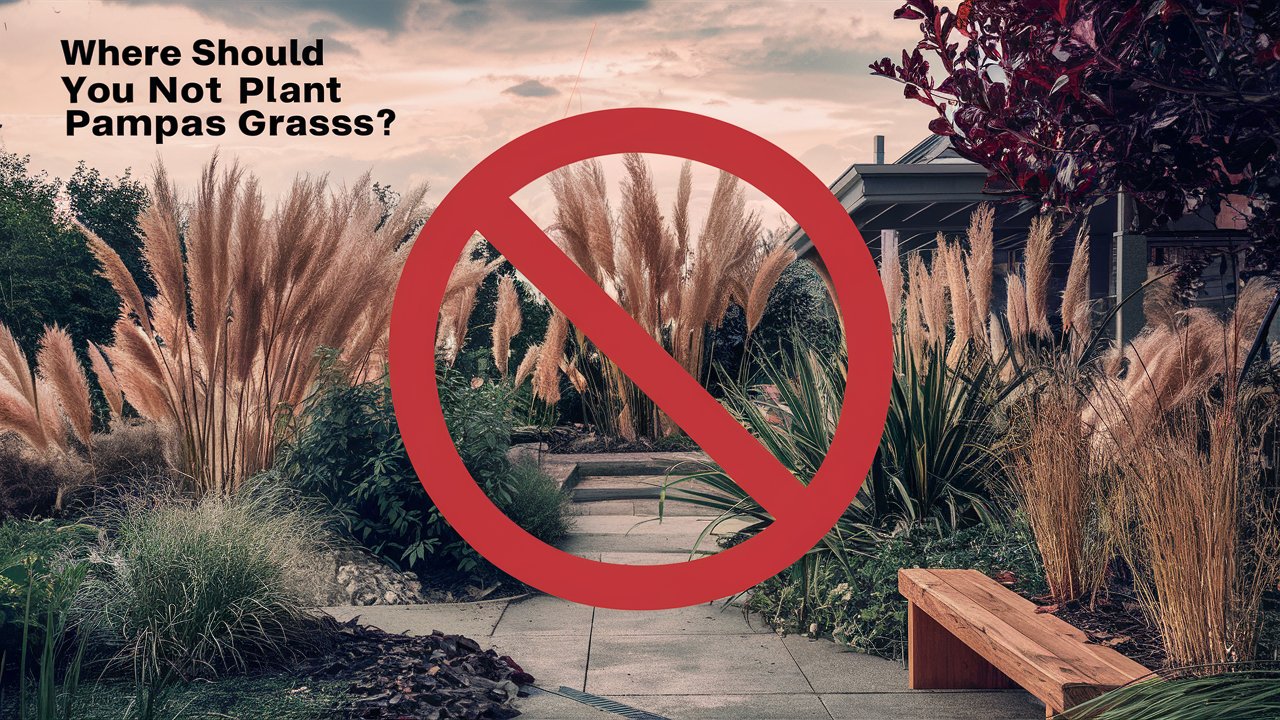Pampas grass (Cortaderia selloana) is a stunning ornamental grass known for its tall, feathery plumes and impressive height. While its beauty can enhance many landscapes, there are certain places where you should not plant pampas grass. In this article, we will explore these areas and provide insights into the best practices for planting and maintaining pampas grass.
Introduction to Pampas Grass
Pampas grass is native to South America and has become a popular choice for ornamental gardens worldwide. Its tall plumes can reach up to 10 feet, creating a dramatic visual impact. However, despite its allure, pampas grass can pose certain risks if not planted in suitable locations.
Where Should You Not Plant Pampas Grass?
Near Residential Areas
One of the primary places where you should not plant pampas grass is near residential areas. This grass can grow aggressively, spreading its seeds widely and potentially becoming invasive. In residential areas, this can lead to:
- Overgrowth that is difficult to control
- Encroachment on neighboring properties
- Increased maintenance requirements
Moreover, the sharp edges of pampas grass leaves can pose a hazard, especially to children and pets.
In Fire-Prone Regions
Pampas grass is highly flammable, making it unsuitable for planting in fire-prone regions. The dry, dense foliage can easily catch fire and contribute to the spread of wildfires. If you live in an area with a high risk of wildfires, it is crucial to avoid planting pampas grass to reduce the fire hazard.
Close to Water Sources
Another area where you should not plant pampas grass is close to water sources such as ponds, lakes, and rivers. Pampas grass can:
- Spread rapidly, outcompeting native aquatic vegetation
- Disrupt local ecosystems
- Affect water quality by increasing sedimentation and altering flow patterns
Planting pampas grass near water bodies can have significant ecological impacts, harming both plant and animal life.
Within Wildlife Habitats
Pampas grass can also disrupt local wildlife habitats. Its dense growth can:
- Outcompete native plants that local wildlife relies on for food and shelter
- Create impenetrable thickets that are difficult for animals to navigate
- Alter the natural landscape, affecting biodiversity
To protect native species and maintain ecological balance, avoid planting pampas grass in or near natural wildlife habitats.
Considerations for Planting Pampas Grass
If you still wish to include pampas grass in your garden, consider the following:
- Choose a Controlled Environment: Plant pampas grass in containers or isolated garden beds to prevent uncontrolled spread.
- Regular Maintenance: Trim the grass regularly and remove seed heads before they mature to reduce the risk of spread.
- Consult Local Regulations: Some regions have restrictions on planting pampas grass due to its invasive nature. Check local guidelines before planting.
Alternative Plants to Consider
For those looking for alternatives to pampas grass, consider these non-invasive ornamental grasses:
- Switchgrass (Panicum virgatum): A native grass with similar height and ornamental value.
- Feather Reed Grass (Calamagrostis x acutiflora): Offers a similar feathery appearance without the invasive tendencies.
- Blue Oat Grass (Helictotrichon sempervirens): Provides a striking visual appeal with its blue-green foliage.
Frequently Asked Questions
Can pampas grass be invasive?
Yes, pampas grass can be highly invasive, spreading rapidly and outcompeting native vegetation.
How often should I trim pampas grass?
Trim pampas grass at least once a year to control its growth and remove dead foliage. Regular maintenance is essential to prevent it from becoming unmanageable.
Is pampas grass harmful to pets?
The sharp edges of pampas grass leaves can cause cuts and irritation to pets. It’s best to keep pets away from areas where pampas grass is planted.
What are the benefits of planting ornamental grasses?
Ornamental grasses add texture, movement, and visual interest to gardens. They are often low-maintenance and can provide habitat for wildlife.
Conclusion
Understanding where you should not plant pampas grass is crucial for maintaining a safe and ecologically balanced garden. By avoiding residential areas, fire-prone regions, water sources, and wildlife habitats, you can prevent the negative impacts associated with this invasive grass. Consider alternative ornamental grasses to achieve a similar aesthetic without the risks. Always stay informed and follow best practices for a beautiful and sustainable garden.


